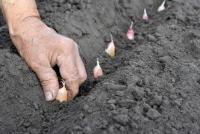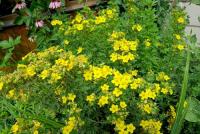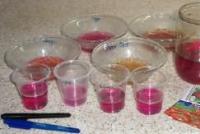Vegetable families with examples and benefits. Classification of vegetable crops
Vegetable plants - quite capacious concept, which has a very blurred boundaries. They have become so firmly established in our lives that we don’t even think about what can be attributed to them and where they came from. In gardening, the main purpose of their cultivation is to get vegetables in the end.
Classification of vegetable plants
Signs that can be classified vegetable plantsa great many. They can be distinguished not only by morphological signs, but also by the duration of the life cycle, as well as growing conditions, harvesting periods, and many other signs. However, all of the above makes more sense for farmers, but the average consumer is more interested in the classification of the part that can be eaten.
Despite the fact that vegetable plants at first glance seem completely different, they have a number of common features that make it possible to define them in groups. It is important not only for farmers, but also for cooks, merchandise experts, botanists.
Botanical classification
(vegetable), examples of which many of us can bring in abundance from daily practice, can be classified according to one family or another. botanical class. In our country, mainly vegetables belonging to the family of nightshade, pumpkin and legumes are grown. You can also meet representatives of cruciferous, amaryllis, celery and mariyevyh.
Advantage botanical classification lies in the fact that it allows cultivated plants (vegetable) in all their diversity attributed to related crops, which is important when growing them. However, for consumers this distribution is very inconvenient, as well as for ordinary gardeners.
Lifetime classification
This classification is most convenient for ordinary amateur gardeners who do not have in-depth knowledge of botany. According to this division, the type of vegetable plant is defined as annual, biennial and perennial.
Annuals are distinguished by the fact that their life cycle, starting with sowing and ending with the formation of seeds, takes place within one year. These include: melons, eggplants, watermelons, cucumbers, zucchini, radishes, etc. Most of them are familiar to us from childhood and are present on our table almost daily.
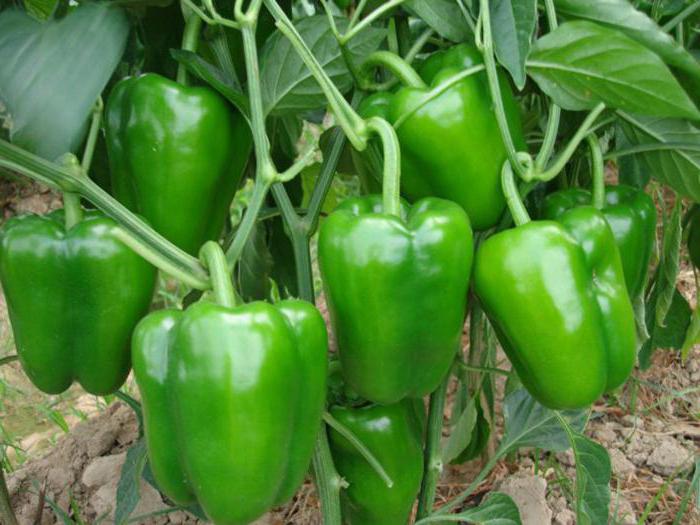
In biennial plants in the first year only a rosette of leaves can be formed, as well as productive organs in which a certain amount of nutrients can accumulate. Then, when the external climatic conditions become unfavorable, they enter the so-called quiescent period. But already in the second year of life, the plant begins to form the stem and blossom, after which the fruits are formed and mature. These include: beets, onions, cabbage, carrots, parsley and other familiar and familiar vegetables.
Perennials are not so common on the territory of our country and are grown mainly in small quantities. Plants of this species in the first year of life form only root system, leaves and buds. But they form their productive organs mainly in the second or third year of life. Many of them are ways to live for three to five years. Perennials are similar to biennials in that by winter they enter a period of rest and begin to redistribute nutrients.
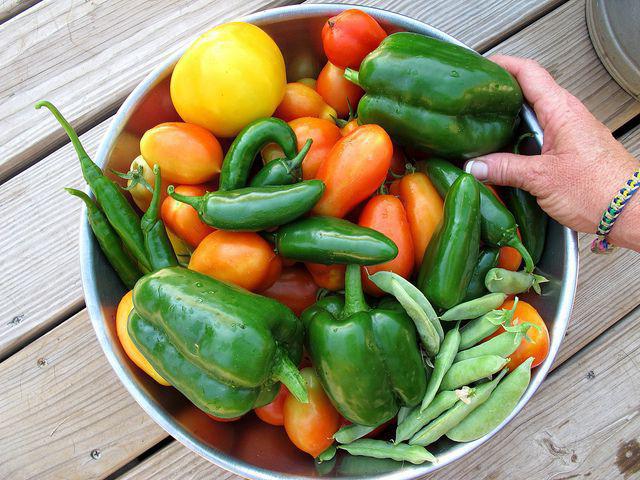
For perennials include garlic, Jerusalem artichoke, horseradish, asparagus, sorrel, onions, and many others. Interestingly, many annuals can also be grown as perennials. For example, if you use cultivation in greenhouses. It is also possible reverse. For example, with a lingering and cold spring, carrots and beets can begin to bear fruit in the first year.
Classification by duration and method of cultivation
Vegetable plants, examples of which are given in this article, can also be classified according to the length of their growing season. In this connection, early, middle and late varieties can be distinguished. But the method of growth can be divided into two main types: soil and greenhouse-greenhouse.
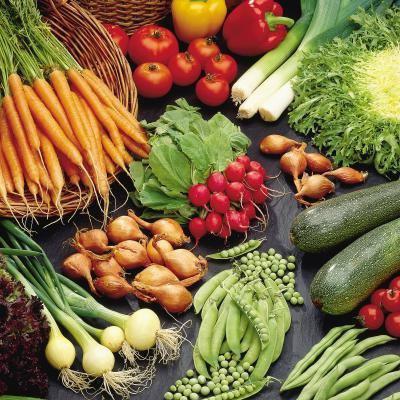
Ground vegetable plants are intended for cultivation in open ground, but the greenhouse-greenhouse - exclusively for growing in greenhouses or in greenhouses. At the same time in the greenhouse can grow only stunted vegetables. However, at present, soil is used less and less for growing plants in greenhouses. Most often, the roots of the plant are placed in a special solution, which consists of a mixture of essential nutrients. But there is a perception that vegetables grown in this way are not only not useful, but even vice versa - they can harm the human body. The most valuable are still ground vegetables.
Classification of keeping quality and used in the food
Longevity determines the ability of vegetables to be stored. In this regard, it is possible to distinguish vegetable plants, which tend to move to a state of rest, and those that do not have such properties.
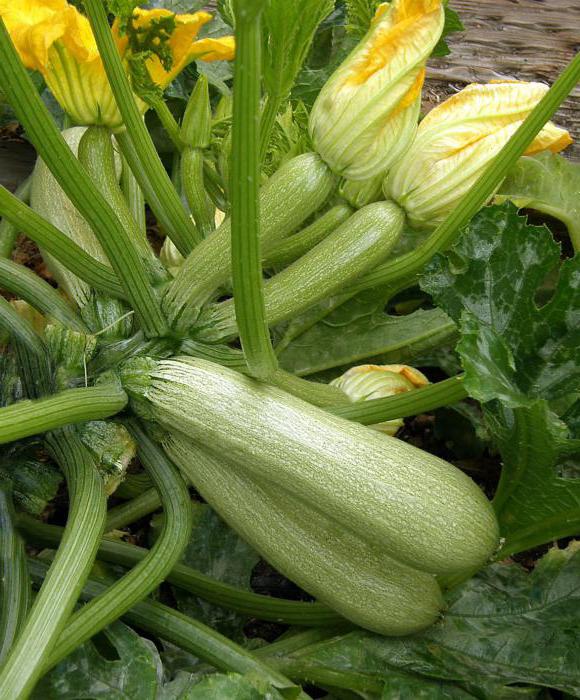
According to how much of the plant can be eaten, two large groups can be distinguished: fruit or generative vegetables, and vegetative ones. Vegetable grain plants, pumpkin and solanaceous plants can be attributed to the first group. But to the second, root crops, tuberous, bulbous, deciduous and sprout crops, which are familiar to all of us, are ranked.
This classification is the most convenient for both ordinary consumers and distributors of vegetables.
Fruit Vegetable Plants
A distinctive characteristic of these vegetables is considered to be the factor that their fruit is a vegetable. Some of them can give it in the phase of botanical ripeness, others - in the phase of technical ripeness. This can be attributed to all your favorite watermelons, tomatoes, melons, squash and many others. These plants need to create conditions so that they begin to bloom and form fruits as soon as possible. At the same time, it is worth it regardless of the degree of ripeness of their fruits.
Features of growing vegetable plants
Cultivated plants (vegetable), examples of which can be found in this article, have some peculiarities of cultivation. First of all, it should be noted that not the last place is played by the layout of the site. Before you implement it, you need to try to study the agricultural practices of those vegetables that you plan to cultivate in your plot.
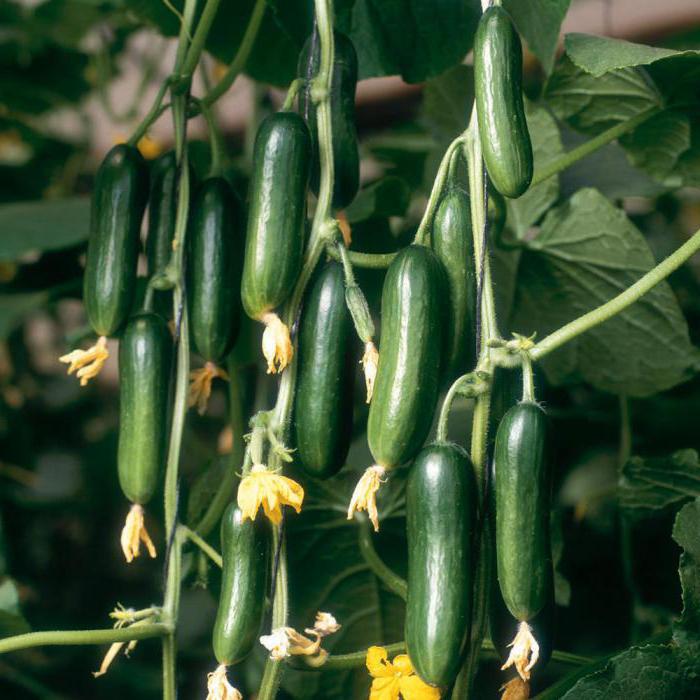
The biological characteristics of certain plants also contribute to the fact that it is necessary to select the natural and climatic conditions for a particular vegetable. Vegetable plants have one common requirement in their cultivation: for several years it is impossible to plant the same or related plant in the same place. The remaining requirements for cultivation are selected individually, as well as the soil composition and the amount of fertilizer required for the application.
Classification V.I. Edelstein
The Soviet scientist Edelstein developed a special classification, which makes it possible to divide vegetable plants not only by biological, but also by agrotechnical conditions. According to this classification, our vegetables can be divided into: cabbage, root, tuber, bulbous, fruit, leafy, perennial, and mushrooms.
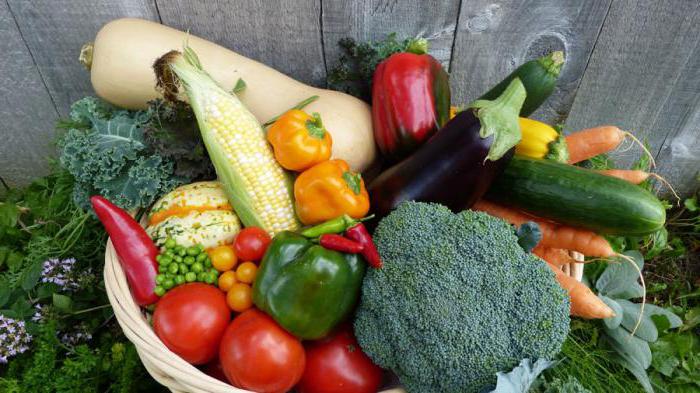
In each of these classes, families are also distinguished.
General classification
In general, this classification can hardly be called scientific, the more it is intended specifically for consumers. Vegetables are not grouped by any attribute in it, however, such species as tuber crops, root crops, rhizomatous plants, cabbage, leafy, spicy, bulbous, tomato, pumpkin, bean, cereal, dessert are distinguished. But the pineapple, to everyone's surprise, scientists have not yet determined neither to vegetables nor to fruit.
Vegetable crops are herbaceous plantsgrown to produce heads, root crops, bulbs, leaves, fruits. 120 kinds of vegetable plants are cultivated. The most common of them belong to 10 families: crucifers - cabbage, rutabaga, turnip, radish, radish, horseradish, watercress; umbrella-carrots, parsley, parsnip, celery, dill; pumpkin - cucumber, pumpkin, melon, watermelon; solanaceous - tomato, pepper, eggplant, physalis; legumes - peas, beans, beans; lily - onion, garlic, asparagus; Asteraceae - salad, chicory, artichoke, tarragon; maryovye - beets, spinach; buckwheat - rhubarb, sorrel; cereals - corn.
There are annual, biennial and perennial vegetable crops.
Annuals complete the life cycle (from seed to seed) in one year. Among them are plants of the family Solanaceae, legumes and pumpkin, as well as radishes, dill, lettuce, spinach, Peking and cauliflower.
Biennials in the first year of life form vegetative organs - bulbs, roots, cabbages, etc., and in the second - seeds. These include: onion and leek, garlic, root vegetables (except radish), cabbage (except
color and Beijing), artichoke. By winter, they lose their leaves, and often the roots, retaining only the organs in which nutrients are stored.
Perennial vegetable plants are rhubarb, sorrel, asparagus, horseradish, tarragon, onion-batun, chives, multi-tiered onions. In the autumn, all the above-ground part of them dies off, and the roots, in which the nutrient reserves are laid, are preserved until the spring of next year.
Every year in spring these plants resume their growth.
Vegetables - the main source of vitamins, they contain important nutrients: proteins, fats and carbohydrates. But due to the high water content (70-95%) they are low-calorie. Taste and pleasant smell of vegetables depend on various combinations of Sugars, organic acids, aromatic and mineral substances contained in them. Sugar in vegetables during fermentation and pickling is fermented, forming lactic acid, which protects them from rotting. Dill, parsley, garlic, onion, radish, horseradish contain many phytoncides-substances with bactericidal properties. Mineral salts contained in vegetables, enhance the physiological processes in the human body. The Institute of Nutrition of the Academy of Medical Sciences of the USSR has established an average annual consumption rate of vegetables of 122 kg per person.
Soviet breeders created over 700 varieties and hybrids vegetable cropswhich are zoned in different climatic zones of the country.
The homeland of most vegetable crops is the country of warm, tropical and subtropical climate. Therefore, many of them are thermophilic, demanding on soil moisture. But some species are cold-resistant, which makes it possible to grow them in the north, in the central regions and in the winter in subtropical regions. Seeds of some when underwintering begin to germinate already under the snow at a temperature of about 0 °, and others - at a temperature not lower than 13 -14 °. Some plants tolerate hot and dry weather, and in the case of wet, rainy die, others, on the contrary, do not tolerate heat.
All this testifies to a wide variety. biological features vegetable crops. Therefore, to obtain a high and high-quality crop of vegetables, it is necessary to create a set of conditions that meet the needs of vegetable plants.
The best time for tillage is autumn. It is necessary to clear the soil from the rhizomes of perennial weeds, larvae of the May beetle. Careful and deep (with a full bayonet of shovels) treatment allows moisture to easily penetrate into the soil and accumulate in it. In spring, it is enough to dig up the soil by 15-20 cm. At low, damp places, you need to arrange ridges or ridges.
Vegetable crops respond very well to fertilizers, especially on podzolic and gray forest soils. The most common organic fertilizers are manure (preferably rotted), fecal matter, peat, bird droppings. Horse manure is made at the rate of 6-12 kg per 1 m2, cattle manure-7-14 kg, manure-10-20 kg, feces-4-8 kg, peat-10-20 kg, leaves parted, 10- 20 kg. Feces are used only in blends.
Vegetables - an extremely capacious concept that has very blurry fuzzy boundaries. The most acceptable definition of vegetables was given by Professor V.I. Edelshtein, who called grassy vegetables as vegetables, cultivated for the sake of their juicy parts, eaten by humans. In the vast territory of our country, according to various sources, up to 40 types of vegetable crops are grown, 23 of them are widespread, such as: white cabbage, Beijing, cauliflower, beet, turnip, rutabaga, carrot, radish, radish, cucumber, pumpkin , watermelon, melon, tomato, pepper, eggplant, onion, garlic, celery, parsley, dill, salad. Other types of vegetables are also represented, but are not widely cultivated.
In food use a variety of plant parts; on the basis of the use of one or another part of vegetable plants are divided into the following groups.
Fruit (tomato, cucumber, eggplant, pepper, zucchini, squash, zucchini, croutons, pumpkin, watermelon, melon, artichoke, physalis, peas, beans, beans, soybeans, sugar corn, etc.).
Root and tuber crops (carrots, swede, table beet, radish, radish, turnip, tuberous celery, parsley root, sweet potato, Jerusalem artichoke, oat root, parsnip, scorzonera, etc.).
Onions (onions, shallots, leeks, onion-slick, fragrant onions, multi-tiered onions, onions-batun, chives, wild-growing onions, garlic).
Leafy, including cabbage (white cabbage, red cabbage, Chinese, leafy, Savoy, Brussels, Peking, kohlrabi, color, broccoli).
Greens (lettuce, chicory lettuce (witluff, endive), escariol, spinach, sorrel, rhubarb, purslane, asparagus, amaranth, watercress, watercress, garden quinoa, leaf mustard, beet leaf (chard), borage, dandelion , asparagus, dill).
Prynovovusovye (anise, kupyr, basil, lovage, hyssop, serpentine, cress, marjoram, tarragon, horseradish, katran, coriander, lemon balm, mint, sage, savory, cumin, thyme, rosemary, root, nigella, fennel, etc. ).
However, this division is rather arbitrary. Some fruit crops produce ripe fruit (tomato, eggplant, pepper, pumpkin), while others have unripe fruit (zucchini, squash, cucumber, peas, and beans on a spatula). In leafy vegetable crops, different parts and organs of the plant are used, not just the leaves, as the name suggests. Thus, in cabbage and Brussels sprouts, cabbage and tsikornogo lettuce (witlufa) they eat sprouted buds, and broccoli and cauliflower have unopened inflorescences. Actually leaves are used in Peking and Savoy cabbage, leaf lettuce, and beetroot (chard), sorrel, spinach. and green onions, as well as a number of spicy aromatic crops such as parsley, celery, dill, basil, tarragon, marjoram, lovage, watercress, mustard leaf, many of which according to this classification belong to another group of vegetable cult p. In such plants as fennel, young beets, celery, rhubarb, leaf stalks are used as food. In a large group of plants, called root vegetables, overgrown roots are used, and in kohlrabi cabbage, an overgrown stalk, resembling a root crop, is used. Young shoots and sprouts can also be used as vegetables, for example, in asparagus and portulaca, as well as various tuber-like formations on the roots and rhizomes of plants, such as Jerusalem artichoke, sweet potato, stachis. All this shows a certain imperfection of this division of vegetable crops into groups. The other classification system for vegetable plants is based on their belonging to various botanical families.Such a classification systematizes a huge variety of vegetables and helps to orient in related crops, for example, when planning crop rotation, when cultures of one botanical family should not be grown consistently on one plot of land. Thus, the group of root crops includes vegetable plants of three botanical families: umbellate, or celery (carrots, parsnips, parsley, celery), cruciferous, or cabbage (rutabaga, turnips, radishes, radishes), and hawks (beetroot). According to the duration of the life cycle, all vegetable plants are divided into annuals, biennials and perennials.
Annual vegetable plants go through their life cycle from sowing seeds to forming new seeds in one year. The vital processes of annual plants are determined by three main periods: seed germination and the emergence of cotyledonary leaves, increased growth of vegetative organs and green mass of plants, the formation of reproductive organs up to the full maturation of the plant. After full implementation of the life cycle, the plant dies out. Annual vegetable crops include plants of the fruit group: tomato, cucumber, eggplant, pepper, zucchini, squash, zucchini, pumpkin, watermelon, melon, artichoke, as well as lettuce, spinach, leaf mustard, watercress, dill, radish, color and Chinese cabbage, broccoli, some spicy flavoring cultures.
Biennial vegetable plants in the first year of life form a rosette of leaves and productive vegetative organs, such as roots, tubers, cabbages, and bulbs. The formation of fruits and seeds occurs only in the second year of plant life, when they form flowering shoots, on which fruits with seeds develop to full maturity. The life cycle of biennial plants is interrupted by a period of physiological dormancy upon the occurrence of adverse conditions for growth and development during maturation. During the period of such forced rest, the rearrangement of nutrients occurs, and with the onset of the new vegetation period, the plant spends its vital resources on the formation of fruits and seeds. Usually

